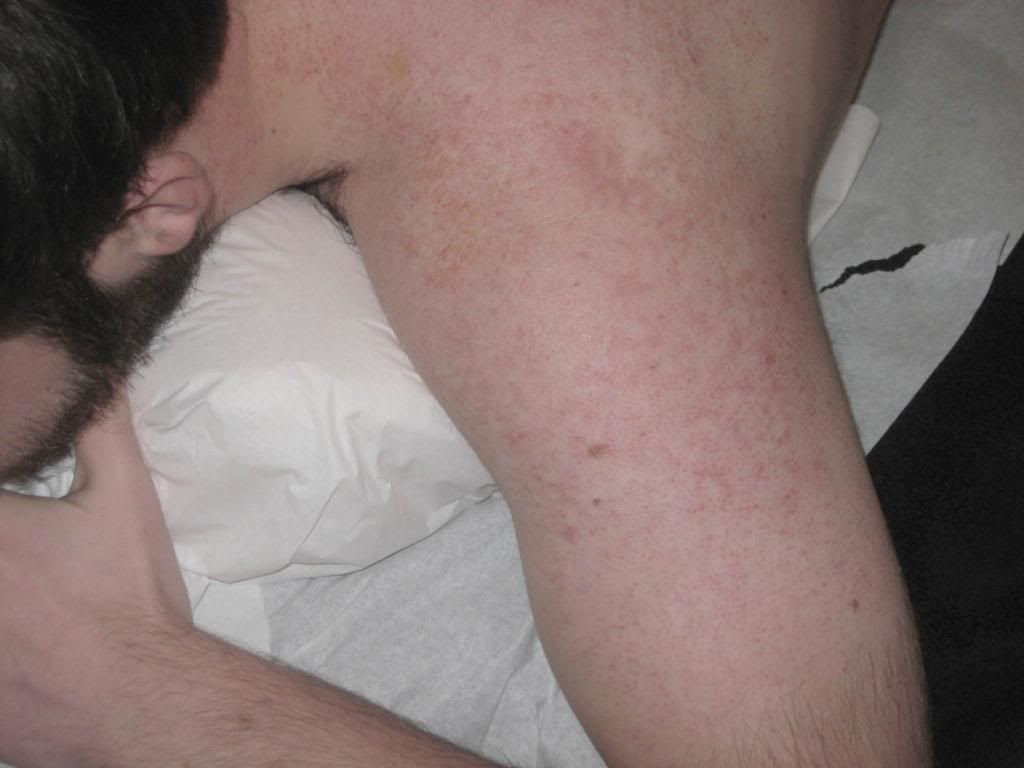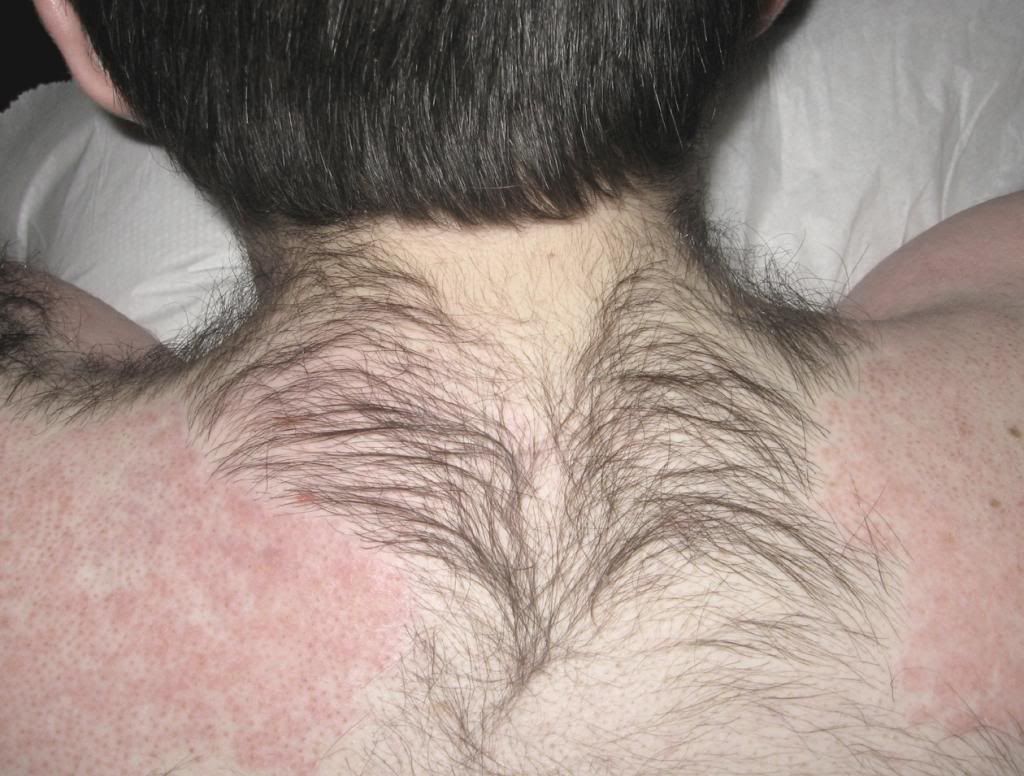My current patient was a total pleasure to work with. Nicely, he followed my post-treatment instructions to the letter (most guys don’t). The point I’m illustrating is how to mitigate post-treatment “scabs” even with heavy body hair and maximum treatment. First step, is to understand what a “scab” actually is! (The photos are before and a few days afterward … the exact time when scabs should have been seen in their "full glory.”)
When the follicle is treated (burned), chemical mediators are released from the mast cells that initiate the healing process. Blood vessels in the area become swollen and, consequently, white cells “leak out” into the area to start “cleaning up the job.”
Along with the white cells, blood serum leaks out (carrying with it clotting factors). In a deep follicle, the serum fills the follicle and collects at the skin’s surface … quickly forming a “scab.” Indeed a scab can, and usually, forms from a perfectly treated deep follicle. (The notion of “overtreatment of the epidermis is incorrect: but that’s another lengthy explanation). So, how to mitigate scabs? It’s all about water and keeping the area moist! A “scab” is “junk” … so wash off the junk!
Yes, we have all been taught to never wash with soap and water after a treatment. This goes against common treatment for burns. Anyway, I simply had this patient take a long warm bath every day after the treatment; he complied.
What happens here is that the “scab material” was washed (soaked) away and was unable to form. All of this speeds the ability for the epidermis to bridge the wound gap quickly. The bathing also allows accumulated “junk” (dead white cells and dead material) to NOT fill the follicle: so not pustules. At the appropriate time, I also had him scrum with a soft body brush. (After the bath, he takes a very light shower and washes with Hibiclens … or other similar detergent … to guard against infection.)
So, this patient got almost no pustules (even though he’s only 20-year-old) and scabs never formed at all. The bathing also helped in post-treatment pain. Ideally, the client would also use an oily material afterward (he did not). (Emu oil is excellent, but so is common Vaseline!) I suspect that the success of “Tea Tree Oil” is largely due to it’s oily nature. By keeping the wound moist, a “hard scab” will not form. It’s very difficult to “beat” good old “soap and water! (At the second “clearance, in 3 months, the client will see 50% reduction of the hair.)
I hope this helps!



 If some scabbing/redness means that effective treatment is going on, I can put up with it in the short term.
If some scabbing/redness means that effective treatment is going on, I can put up with it in the short term. I am so glad you mentioned coconut oil. It’s all I can talk about these days!
I am so glad you mentioned coconut oil. It’s all I can talk about these days!
